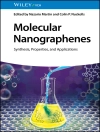Solvents are ubiquitous throughout the chemical industry and are found in many consumer products. As a result, interest in solvents and their environmental impact has been steadily increasing. However, in order to achieve maximum integration of new green solvents into the relevant chemical sectors, clarification of the social, economic, and environmental implications of solvent substitution are needed. This book explores the solvent life cycle, highlighting the challenges faced at...
Cuprins
Introduction to Solvents and Sustainable Chemistry; Modern Trends in Solvent Use; Sustainability Applied to Solvents; Alternative Solvents; Green Chemistry Concepts and Metr...
Despre autor
James Sherwood is a Research Associate at the University of York, UK, where he works at the Green Chemistry Centre of Excellence. In addition to his work on solvent eff...












